Prince Caspian, published in 1951, is the second book in the classic children’s fantasy series The Chronicles of Narnia by C.S. Lewis.
(At least, it’s second in order of publication. There is some debate about the best order in which to read them. For the record, I’m on the side of publication order). There’s also lot of debate about sexism, racism, and colonialism in The Chronicles of Narnia.
It’s important to acknowledge these issues, but they aren’t the focus of this post. Here, I want to talk about Irish history in The Chronicles of Narnia (TCofN).
DISCLOSURE: This page may contain affiliate links. This means if you click on a link to a product or service and make a purchase, I may receive a commission at no cost to you. I choose affiliates with care and appreciate your supporting my work in this way. See Disclaimers and Affiliates for more information.
Irish History in Prince Caspian
I vividly remember the moment I first stepped through the wardrobe with Lucy Pevensie in The Lion, The Witch, and the Wardrobe (LWW). I read my copies so frequently in childhood that they fell apart when I returned to them in graduate school.
Now I have approached The Chronicles of Narnia as a child reader, as an academic, as a librarian, as a writer, and as a mother reading to her children. These stories are embedded in my consciousness, probably more deeply than I realize.
It was a great joy to me to discover a new way to read these beloved books: as a path into Irish history.
Finding the Link Between Prince Caspian and Irish History
Last summer, my husband’s sabbatical work allowed our family to spend a month in Ireland. As part of my preparation to get the most of that experience, I read this survey of Irish history.
I recalled that C.S. Lewis was actually Irish, not English. (Lewis spent most of his adult life in England, the characters in TCofN are English, and the scenes from our world all occur in England.) I realized it would be a missed opportunity not to read my children at least The Lion, the Witch, and the Wardrobe before we went. We finished the book on the drive to the airport!
We started Prince Caspian when we got home. Full of Irish history, I read aloud while they played a made-up game called Ancient Heroic Burial Site. I marveled at the links I saw between the history, the book, and my children’s imaginative play.
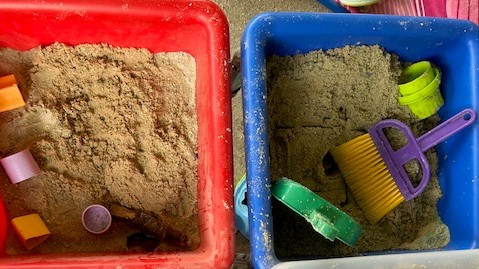
|Related: Saint Patrick’s Day Traditions: What I Learned at the Saint Patrick Centre in County Down
A Little Background Knowledge
This post probably will be most useful to you if you’ve read The Lion, the Witch, and the Wardrobe and Prince Caspian. If you have, I hope you’ll enjoy this deep dive into Lewis’s inspiration. If you haven’t, I hope you’ll be inspired to pick up a copy!
Prince Caspian: A Summary
Narnian time flows differently from time in our world. The events of Prince Caspian occur after those of The Lion, the Witch, and the Wardrobe. It’s one year later in our world, but roughly a thousand years by Narnian time. The four Pevensie children who defeated the White Witch and ruled as kings and queens of Narnia before stumbling back into our world at the end of LWW must return to Narnia to save it from a new threat.
In the millennium since they’ve been gone, Narnia has been conquered by the Telmarines, humans descended from a group of pirates from our world. All the talking beasts and magical creatures in Narnia have gone into hiding as the Telmarines have tried to wipe them out and take Narnia for their own.
But the Telmarines cannot entirely stamp out the stories and rumors of “Old Narnia.” Young Prince Caspian hears these stories and wishes they were true. When his wicked uncle King Miraz produces a son, Caspian (the true heir) is forced to flee for his life. A group of Old Narnians living in hiding take him in. The rest of the story is about Caspian’s quest to retake his father’s throne and–though he is a Telmarine–restore Old Narnia.
C.S. Lewis’s Background
To adequately discuss anyone’s background, we have to go further back than their birth–often much further back. C.S. Lewis was born in Belfast in 1898, but the story of how he came to be born in Belfast begins much earlier. We’ll begin nearly a thousand years earlier, with the coming of the English to Ireland.
Elements of Irish History in Prince Caspian
1. The Telmarine Invasion
Of all his lessons with Doctor Cornelius the one that Caspian liked best was History. Up till now, except for Nurse’s stories, he had known nothing about the History of Narnia, and he was very surprised to learn that the royal family were newcomers in the country. “It was your Highness’s ancestor, Caspian the First,” said Doctor Cornelius, “who first conquered Narnia and made it his kingdom. It was he who brought all your nation into the country. You are not native Narnians at all. You are all Telmarines–that is, you all came from the Land of Telmar, far beyond the Western Mountains. That is why Caspian the First is called Caspian the Conqueror.” —Prince Caspian, Chapter 4
At the time of Prince Caspian, the Telmarines have been in power for centuries. Caspian’s father was King Caspian IX, so at least nine Telmarine monarchs have held the throne of Narnia.
…And the Anglo-Norman Invasion
In the medieval era, Ireland was divided into smaller units controlled by competing warlords. From 1066, England was held by conquerors from Normandy known to history as Anglo-Normans.
In the 1160s, Diarmait Mac Murchada, the King of Leinster (one of those smaller areas), got into a tangle while abducting a rival’s wife. He asked for the Anglo-Norman King Henry II of England‘s help getting out of it. To seal the deal, he offered his daughter Aoife‘s hand in marriage.
In 1170, Richard FitzGilbert de Clare arrived in Ireland. He was a deposed English earl who had opposed Henry II in the civil war that led to Henry’s accession. FitzGilbert de Clare captured Dublin, married Aoife, and took the name by which he is best known: Strongbow.
Mac Murchada probably intended to leverage Anglo-Norman force to make himself high king of Ireland. However, he died in May 1171 and Strongbow succeeded to the crown of Leinster.
Henry II, anxious about Strongbow’s increasing power, landed in October 1171 with an invasion force of 400 ships. He was determined to check Strongbow’s possible ambitions of setting up a rival state and compel the allegiance of the entire island to the English crown.
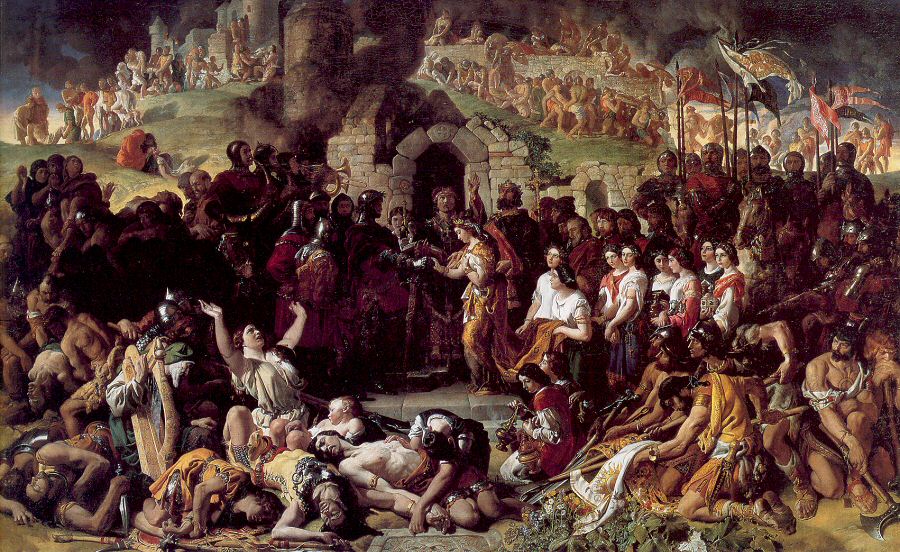
2. Old Narnians and New Narnians
In Prince Caspian, the Narnian population is divided into “Old Narnians” and “New Narnians.”
The Old Narnians were there before the Telmarines. This indigenous Narnian population is composed of creatures from Classical mythology and animals who have the gift of speech.
The New Narnians are the Telmarines themselves. Though they have been in Narnia for centuries, they still identify strongly with their Telmarine identity.
…And Old Irish, Old English, and New English
In Irish history, from roughly the time of England’s Henry VIII (r. 1509-1547) we find the Old Irish, the Old English, and the New English.
The three social and ethnic groups that now began to emerge in Ireland were the Old English, descendants of the original Norman colony; the Old Irish, or Gaelic population; and the New English, recent arrivals (and new ones were coming all the time as the sixteenth century wore on) who were adventurers, administrators and new colonists. The first two groups retained their allegiance to Catholicism. The New English were not just Protestant, but disproportionately Puritan. There would be no union of hearts and minds between the Old Irish and the New English. […] The Old English were the ones caught in the middle, loyal subjects of the king who nonetheless declined to abjure their spiritual loyalty to the Pope. [Richard Killeen, Ireland: Land, People, History (75)]
We can draw clear lines between the Old Narnians (who correspond to the Old Irish/Gaelic population), and the New Narnians (who correspond to the New English). The Pevensie children represent the Old English. The children are culturally and religiously aligned with the Old Narnians and serve as a link between the Old Narnians and the New Narnians.
3. Aslan’s How
Prince Caspian headquarters his army at a hill called Aslan’s How. Inside the hill is the Stone Table where the White Witch killed Aslan, the supernatural Lion who cares for Narnia, in LWW–and where he came to life again.
Despite my many readings of Prince Caspian, I didn’t understand the concept of Aslan’s How until I visited Ireland. The idea of a hill on top of a hill, much less a hill you could walk around inside, baffled me. Was it a natural phenomenon? A thousand years didn’t seem like long enough for that to happen. I couldn’t visualize it.
It was certainly an awesome place, a round green hill on top of another hill, long since grown over with trees, and one little, low doorway leading into it. The tunnels inside were a perfect maze until you got to know them, and they were lined and roofed with smooth stones and on the stones, peering in the twilight, Caspian saw strange characters and snaky patterns, and pictures in which the form of a Lion was repeated again and again. It all seemed to belong to an even older Narnia than the Narnia of which his nurse had told him. –Prince Caspian, Chapter 7
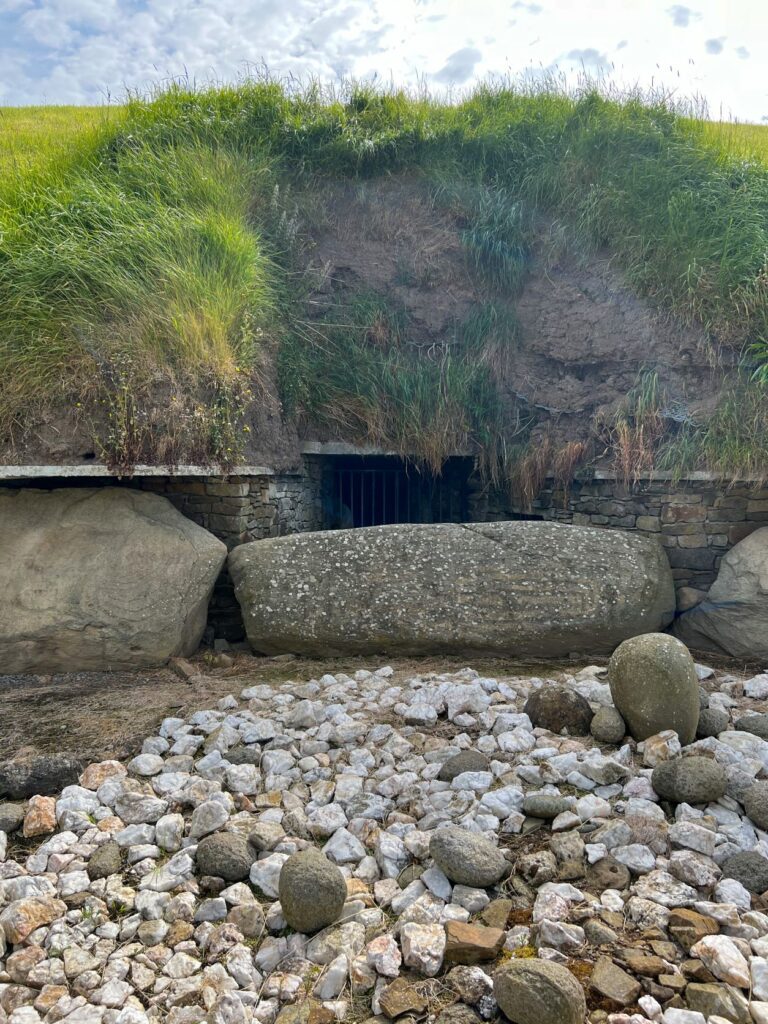
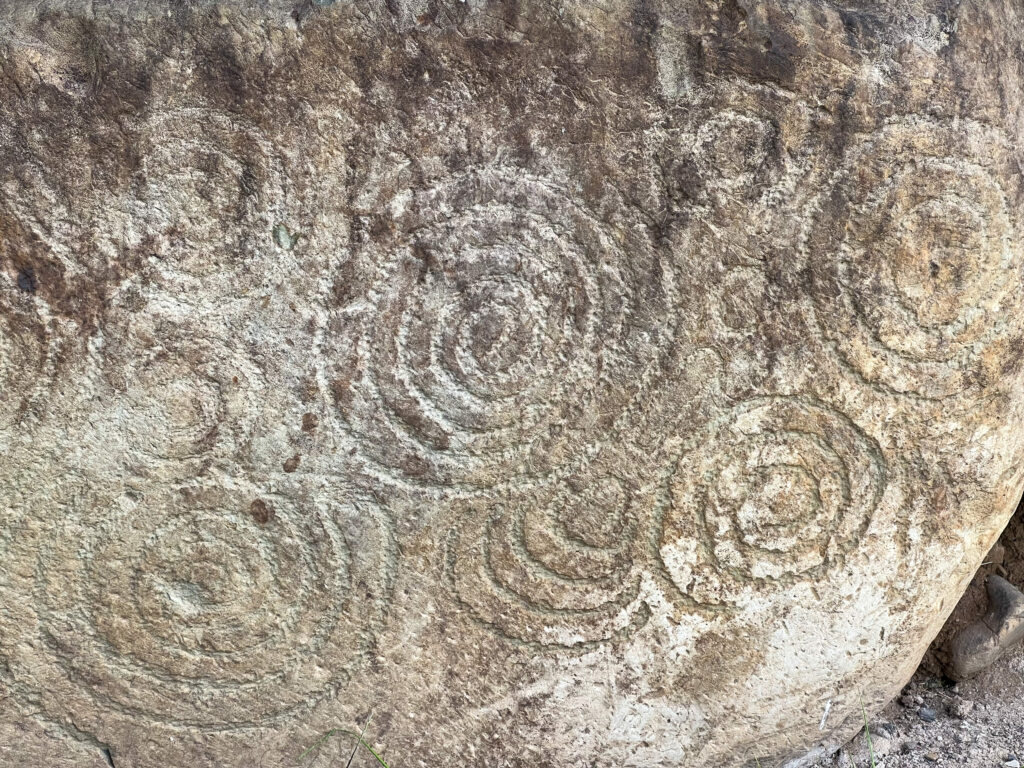
…And Ireland’s Holy Hills
Solitary holy hills that rise above the surrounding landscape dot Ireland. There’s the legendary Hill of Tara, the Hill of Slane, Slemish Mountain, and dozens of others.
Then there are the ancient passage tombs at Newgrange and Knowth and dotted around the Boyne Valley. Over the last century, many were reconstructed to look as they might have thousands of years ago. In Lewis’s boyhood, they would have looked like ancient hills. I wonder if he ever made his way inside them as a boy and marveled at the writhing carvings on the walls.
I’m glad I visited for many reasons, not least because I now understand the concept of Aslan’s How.
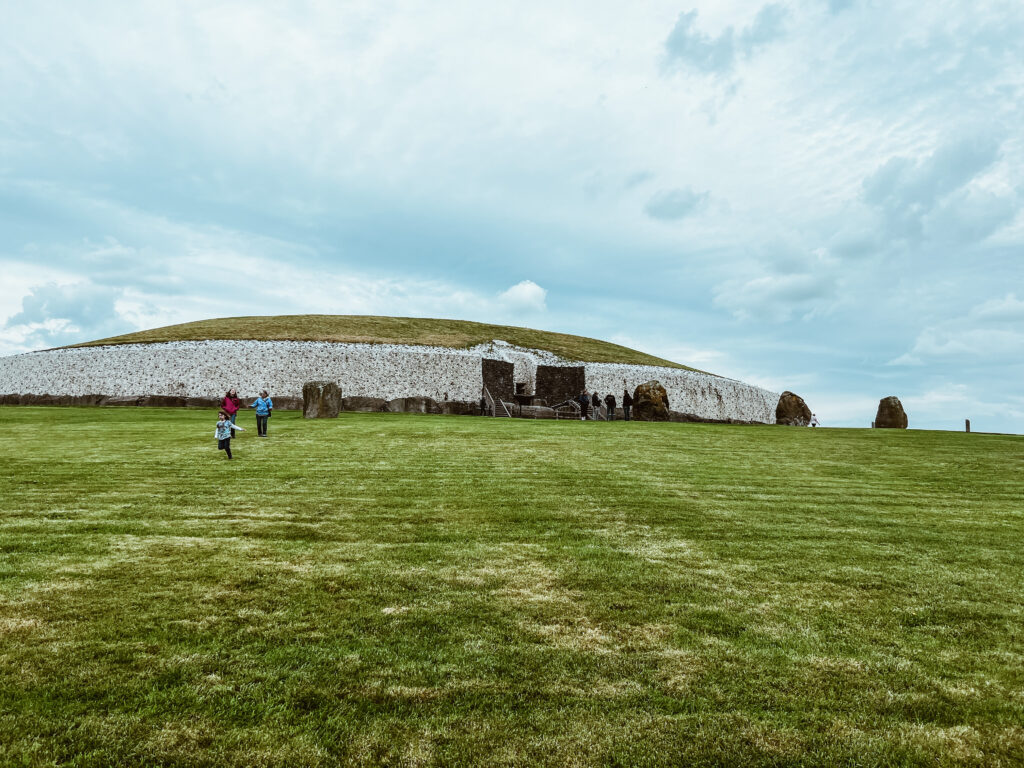
4. The High King
The notion of High Kingship is more a myth of Irish history than a reality. There never was an Irish High King who could compel allegiance in the modern sense of kingship, though there were many petty warlords who wouldn’t mind claiming to be the High King. Only one man in history, Brian Boru, could make any real claim to uniting Gaelic Ireland under his authority.
He was the nearest thing Gaelic Ireland had seen, or was ever to see, to a true high king. But this much abused term–a back projection from nineteenth-century nationalism–obscures as much as it illuminates. Brian was not a king in any common understanding of the word. […] Brian is better described as an over-king, the most accomplished warlord in a warlord society. He had authority but no legitimacy. He was simply top dog for the time being, and if he slackened his grip his power would be compromised. [Richard Killeen, Ireland: Land, People, History (36)]
In TCofN, Peter Pevensie fills the role of the High King. Like Brian Boru, he is the only High King in his country’s history. But while the High King Peter takes his title and mythic role from the Irish past, in practice he has more in common with the 19th century understanding of kingship.
5. Cair Paravel
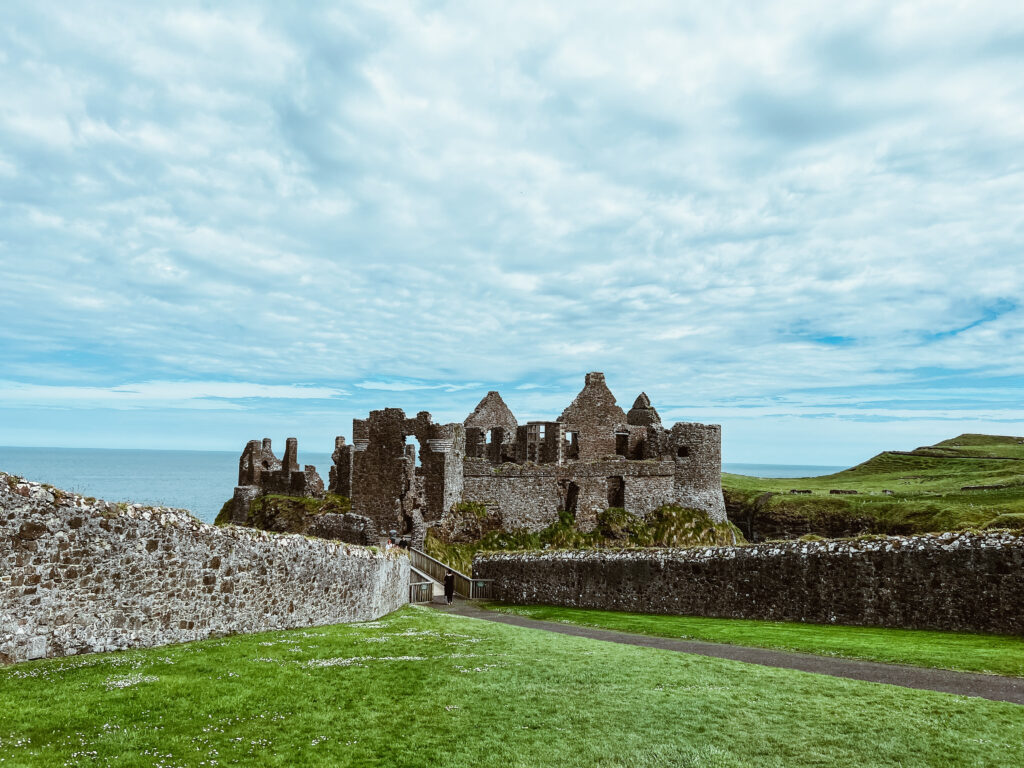
Cair Paravel is the castle on the Eastern Sea where all true Narnian monarchs have their seat. The characters discuss it frequently, but the only time readers spend any significant amount of time there, in Prince Caspian, it is a ruin.
Dunluce Castle on the North Antrim Coast, near Lewis’s native Belfast, is also a ruin, set right on the sea cliff. Dunluce Castle claims to be the inspiration for Cair Paravel. When I visited I found myself whispering,
“We are in the ruins of Cair Paravel itself.” –Prince Caspian, Chapter 2
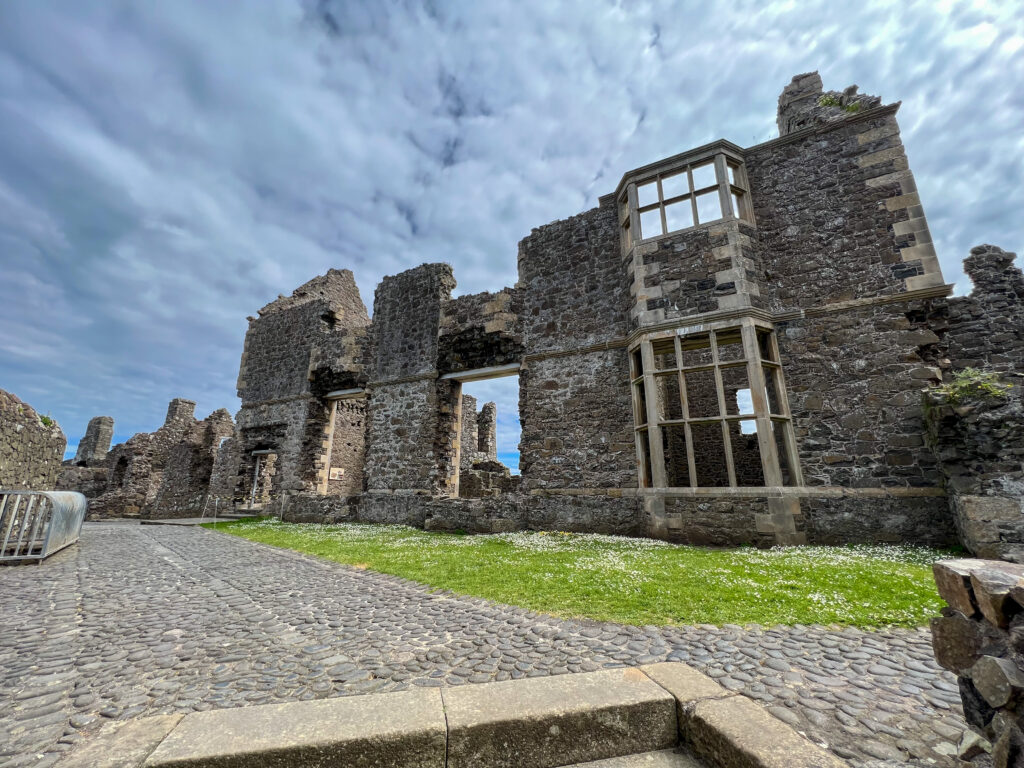
|Related: 15 Favorite Books About Ireland From My Family’s Bookshelves
6. Prince Caspian Himself
C.S. Lewis’s ancestry was as complicated as everyone else’s, but by the time of his birth his family were middle-class Ulster Protestants. Broadly, Ulster Protestants were the descendants of the New English. Lewis, both firmly Irish and firmly British (though not English, an important distinction), seems to have felt as conflicted about his background as Caspian does about his. It sounds complicated because it is.
Caspian, like Lewis, is both indigenous and invader. Caspian is Narnian and Telmarine. Lewis was Irish and British. Both express deep love for the land of their birth while understanding that is not the land of their lineage. This internal conflict will be familiar to many people born in lands their ancestors conquered.
Aslan addresses it in this way:
“[T]hey invaded Narnia, which was then in some disorder…and conquered it and ruled it. Do you mark all this well, King Caspian?”
“I do indeed, Sir,” said Caspian. “I was wishing that I came of a more honorable lineage.”
“You come of the Lord Adam and the Lady Eve,” said Aslan. “And that is both honor enough to erect the head of the poorest beggar, and shame enough to bow the shoulders of the greatest emperor on earth. Be content.” –Prince Caspian, Chapter 15
These are some of my favorite lines in Prince Caspian. They express well what I find to be true about humanity: we are all a mixed bag. Humans can be both terrible and wonderful, individually and in groups, in history and in life.
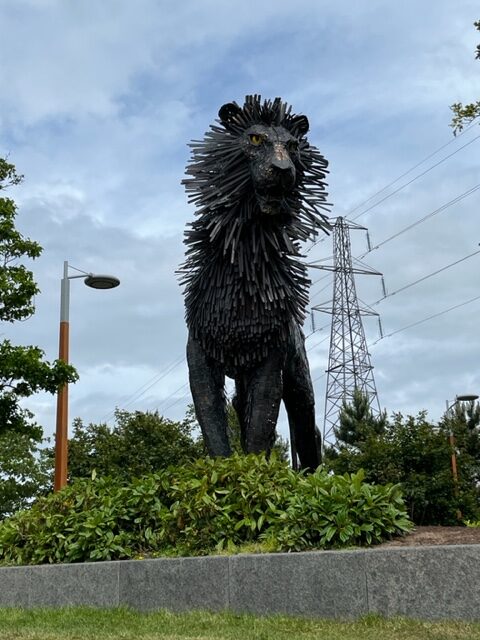
Growing Up With Prince Caspian
Prince Caspian was not a childhood favorite of mine (partly because Aslan’s How freaked me out) but I have come to love it. It has the most complex structure of any book in the series, and it deals more with statecraft and warfare than with myth and magic. Though there is plenty of that, too, even the fantasy elements are of a more mature kind. Growing up is a major theme.
This is not to say Prince Caspian isn’t a good children’s book, but it is a strange one. It can serve as an introduction to some of these more grown-up concerns. It provides an excellent theoretical foundation for thinking about painful historical concerns such as invasion and genocide, events which Ireland and much of the rest of the world have encountered.
If you haven’t read Prince Caspian, I hope you will. If you have, I hope this post has left you with a deeper appreciation for it.
What thoughts does this post raise for you? Let me know in the comments.
Pin it for later!

15 comments
[…] (ARTICLE) Irish History in Prince Caspian […]
Such a cool post on the Irish history in The Chronicles of Narnia. I loved hearing your backstory of reading the books growing up and coming full circle about reading your children The Lion, the Witch, and the Wardrobe en route to the airport to the Ireland trip.
I’m glad you enjoyed it. It’s so interesting to read a book at different stages of your life and make new discoveries.
Came across your blog largely by accident, but just wanted to say I think you’re right – ie, that the corollaries between Caspian and Lewis himself aren’t just coincidental. By extension, the story might have been Lewis’s way of acting out – ie, of imagining an idealised version of himself: a character who sides with the colonised against the colonists etc, etc.
Just my two cents’ worth.
I’m glad you found me, and I agree with you. Lewis was fascinated with Gaelic Ireland, as Caspian is with Old Narnia. As a white American, I can certainly sympathize with the desire to somehow reconcile love of my homeland with the fact that my ancestors colonized it. A different situation from Northern Ireland, of course, but it brings up similar feelings.
I really believe this to be a FANTASTIC article! Though I know C.S. Lewis and some of his writings, I have never read The Chronicles of Narnia. You would think that, at 73, I would have gotten around to it. I did not know that Mr. Lewis was from Ireland, nor did I know anything about Prince Caspian or how any of this related to Ireland. Thank you for enlightening me on this subject.
Ireland seems to be quite an amazing place. Some of my relatives from the past were from Ireland, as well as England…and Sweden and France. Since I have a profound fear of flying, you will have to be my eyes going forward. It is time for me to carve out some time to read The Chronicles of Narnia, and I will. Again, thank you.
You are in for a treat! I’m kind of jealous that you get to read The Chronicles of Narnia for the first time. I’m glad the article inspired you to do just that.
Such a great article! I’m intrigued by the parallels between Prince Caspian and Irish history. You’ve inspired me to reread these stories in the near future! Thank you for sharing your insights!
Enjoy the reread! I always get something new out of the books.
This is a really interesting amount of detail into one of the Narnia books. Lovely to hear about all these connections.
So glad you enjoyed it!
What an interesting post about Irish history, something I’m not familiar with. Thank you for sharing a glimpse into this book, which I may add to my reading list.
Oh, I hope you will! Narnia is such a culturally significant text that it’s great to read it at least once.
I had no idea about ANY of this! And this couldn’t be more relevant to me because not only am I part Irish, but my family and I are actually going to Ireland at the end of April! I love how detailed you were with this post about the historical accounts; nicely done! Thanks so much for sharing! My favorite post of the day!
Oh, how wonderful! Please let me know if you need recommendations, advice, etc., for your trip!